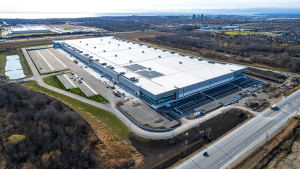We first began hearing about "sick buildings" 25 or more years ago. We were making our first stab at really tight buildings in the name of energy efficiency. We skimped on ventilation, perhaps, and people were complaining about red itchy eyes and scratchy throats.
Part of the problem turned out to be high levels of volatile organic compounds (VOCs). They were emitted as part of the off-gassing of things like paints, glues used by furniture makers, and dyes and sizing used in carpeting and upholstery fabrics.
The idea of "sick buildings" gained some traction in the popular press for a while. But engineers designed better HVAC systems, manufacturers changed some of the specs for their dyes and adhesives, the press went off in search of another sensation, and the problem of "sick buildings" was solved.
Or was it?
Growing concerns about a warming world brought renewed interest in tight buildings. The concept of net-zero energy arrived on our doorsteps. People began to wonder about the carbon embodied in a building during its construction and operating lifetime, and what happened to it when the building reached the end of its useful life.
In the meantime, there was still the need to keep occupants comfortable, unbothered by high levels of VOCs.
Now there is a long-term project under way in Europe called ECO-SEE, which stands for Eco-innovative, Safe and Energy Efficient, and its aim is to develop highly insulated wall panels that have been treated with novel chemical processes. The panels are designed to enhance the capacity of building materials to capture VOCs and thus create healthier indoor environments.
But this present generation of researchers has new technology to work with, which enables them to attack the twin problems of indoor air quality and improved energy efficiency in ways no one dreamed of a generation ago.
So the European Community has funded a four-year project to address the problems. The research is being co-ordinated by Pete Walker of the University of Bath, in England.
Researchers are developing highly insulated wall panels that have been treated with novel chemical processes, including photocatalytic coatings using nanoparticle technology. They are coatings that are capable of decomposing harmful chemicals when exposed to sunlight. This prevents them from being released into the indoor air.
"This project addresses an emerging health problem associated with modern low-carbon buildings," Walker said in a news release.
"While modern buildings have been developed to be very airtight — improving their energy efficiency and reducing their carbon footprint — these sealed environments have created unexpected side effects," he said, citing build-ups of potentially harmful chemicals in the indoor air.
When the ECO-SEE project began two years ago, the initial emphasis was developing photocatalytic coatings. Photocatalysts are simply substances that cause a chemical reaction that is energized by visible light. They are, for the most part, made with things that are both abundant and cheap: air, water, daylight and the catalysing substance — often, but not always, titanium dioxide.
The researchers have also been developing materials for capturing VOCs and buffering moisture, using bio-based products such as wood-based panels, and lime and clay materials.
The aim is a super-insulated wall panel that will capture VOCs and convert them into carbon dioxide which will in turn be converted by photosynthesis into starch and oxygen.
With two years to go in the project, it has now entered its validation phase, with installations of panels in two of the partner countries — Spain and the U.K.
To do that, all the innovative work of the last two years has to be integrated into high-performance wall panels, says Walker.
At the end of it all, he says, the intention is to bring to market "building materials that offer at least 15 per cent lower embodied energy than traditional construction materials, with a 20 per cent longer lifespan and at least 20 per cent lower build costs."
Korky Koroluk is an Ottawa-based freelance writer. Send comments to editor@dailycommercialnews.com.



Recent Comments
comments for this post are closed